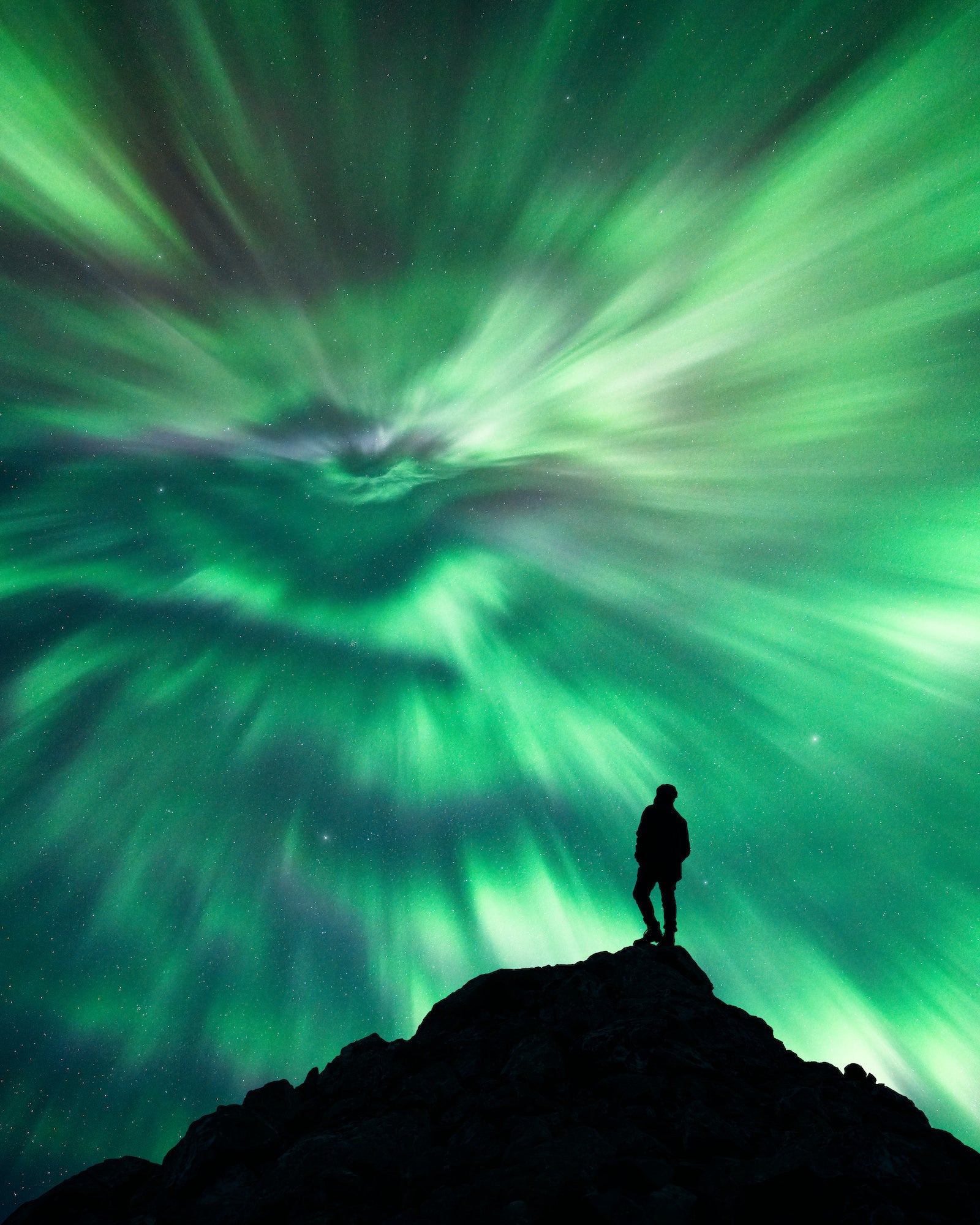Alan Poelman (@alftown) is a Canada-based landscape and wildlife photographer. He frequently ventures to various landscapes across North America and is well-versed in the art of capturing the natural world. That’s why when the northern lights were sweeping across his area recently, he needed to be a part of it. He went out with his Sony Alpha 7R IV and Sony 12-24mm f/2.8 G Master lens to Atikokan, Ontario, but wasn’t necessarily expecting it to result in one of the most extraordinary auroras he had ever witnessed. We caught up with him to learn more about the story behind that magical night and how he captured this silhouette shot with the majestic aurora.

Photo by Alan Poelman. Sony Alpha 7R IV. Sony 12-24mm f/2.8 G Master. 2-sec., f/2.8, ISO 1600
Setting The Scene
On that night, Poelman says his uncle called him because he heard there would be some aurora activity. They decided they would head out to Atikokan to see what they could capture. He initially had his attention focused on a lake with some intriguing aurora activity. As he was about to leave for the night, the entire sky suddenly illuminated with vibrant colors. “I got really lucky, basically. I found myself a nice place to stand and took out my Sony Alpha 7R IV and Sony 12-24mm f/2.8 G Master. It was definitely one of the best auroras I’ve ever seen. It’s pretty astonishing that it came that far south.”
Getting The Shot
Because aurora images can be difficult to adjust in post-production, Poelman says you have to go on the fly and balance your ISO. His settings for this image were 2-sec., f/2.8, ISO 1600. “I've never actually experienced this type of aurora up until now where it's covering the whole sky. To successfully capture something like this, it’s all about adapting with the aurora as it evolves and knowing how to change your settings on the fly.”
He continues, “To make sure I got the shot, I had my camera on a tripod and used a continuous shooting mode. The lens was wide enough to take in the center point of the aurora and get some rock surfaces in the shot as well, which I don’t think I would’ve been able to do with a 16mm.” This technique allowed him to capture the evolving light display and to step in and out of the frame. This resulting image even features an eye-like shape in the aurora, adding a unique and captivating element to the photograph.
Enhancing Through Editing
Poelman’s post-processing techniques are to enhance the natural beauty of the photograph. He begins by uploading his images to Lightroom before exporting them to Photoshop. “I use luminosity masks to select light values and apply curves layers to the darks and lights, which helps bring out the natural colors and contrast of the image.” This approach ensures that the final image retains its authenticity while highlighting the vivid colors of the aurora.
See more of Alan Poelman’s work on Instagram @alftown.

